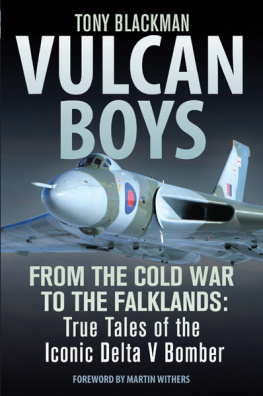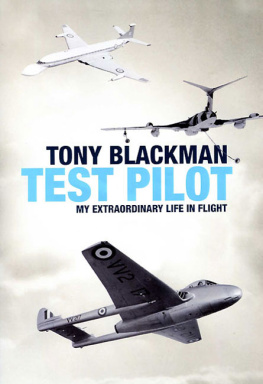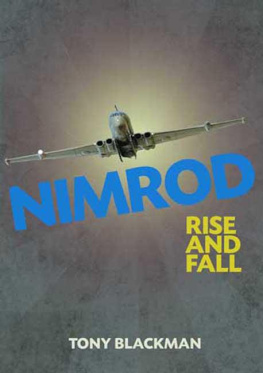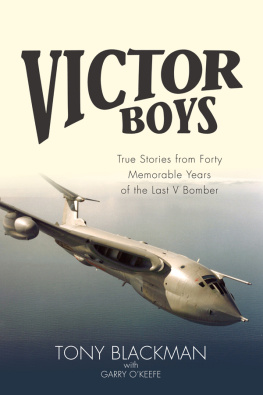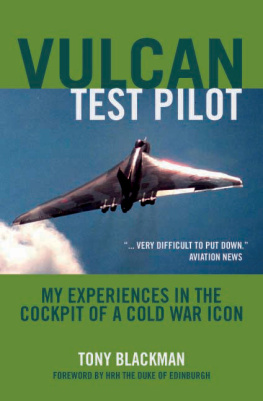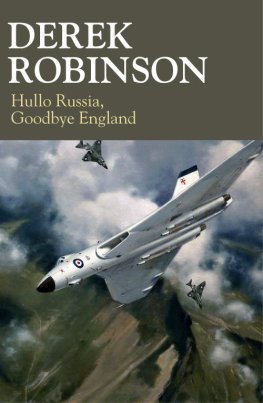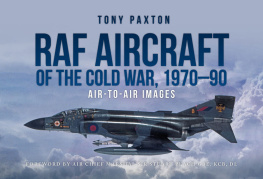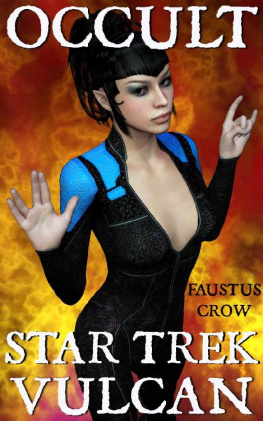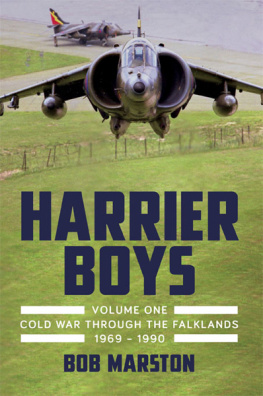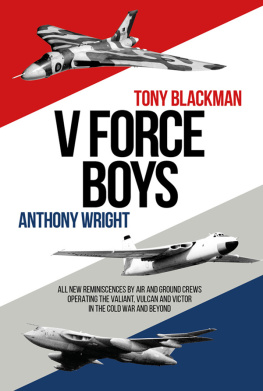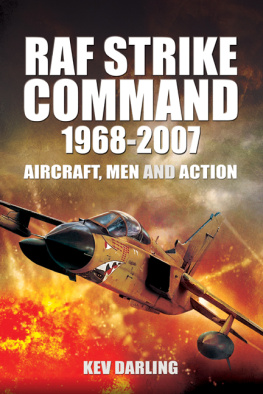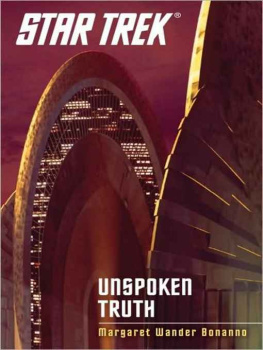
Published by
Grub Street
4 Rainham Close
London
SW11 6SS
Copyright Grub Street 2014
Copyright text Tony Blackman 2014
Reprinted 2015
A CIP record for this title is available from the British Library
ISBN-13: 978-1-909808-08-9
EPUB ISBN: 978-1-910690-88-8
All rights reserved. No part of this publication may be reproduced, stored in a retrieval system, or transmitted in any form or by any means electronic, mechanical, photocopying, recording or otherwise, without the prior permission of the copyright owner.
Cover design by Sarah Driver
Printed and bound by Finidr, Czech Republic
AUTHORS NOTE
The reader will note that there are two styles to the
text layout in the book. Indented and full out.
All indented text is my commentary. TB.
CONTENTS
Chapter One
Test Flying the Vulcans
Chapter Two
Navigating the Test Pilots
Chapter Three
Engine Test Bed
Chapter Four
Piloting the Vulcan
Chapter Five
Nav Radar and H2S
Chapter Six
Down Under Navigator
Chapter Seven
An AEOs Story
Chapter Eight
Blue Steel
Chapter Nine
Taceval on Being Combat Ready
Chapter Ten
Vulcan Crew Training in North America
Chapter Eleven
North American Support
Chapter Twelve
Operation Corporate
Chapter Thirteen
Wideawake and Port Stanley
Chapter Fourteen
Shriking, Rio and Return
Chapter Fifteen
The Vulcan K2 Tanker
Chapter Sixteen
Those that are left
Appendix 1
Acronyms and Explanations
Appendix 2
Black Buck Raids of Falkland Islands by Vulcans 1982
DEDICATION
To the many Vulcan aircrews and ground crews, some sadly no longer with us, who operated the aircraft for over thirty years helping to guard the United Kingdom through many troubled times.
FOREWORD
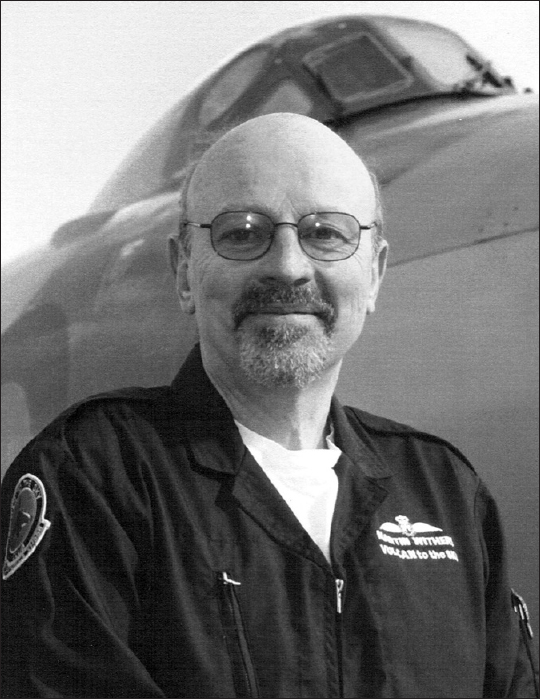
When Tony asked me to write the foreword to Vulcan Boys I was delighted to be associated with this book telling the whole story of the aircraft from its design concept, through the Cold War when, along with the other V bombers, it played out its most important role as Britains nuclear deterrentbefore unbelievably, at the end of its service life, also playing a significant role both with bombs and missiles, in liberating the Falkland Islands, for which it (and I) gained much celebrity.
As chief test pilot of Avros Tony helped develop the Nimrod, the Victor K2 tanker and the Vulcan and so he is probably in a unique position to write books about these aircraft and compare their capabilities. Despite being in competition with Handley Page during the early days of the V bombers, he clearly recognised what a wonderful tanker the Victor became with its very large bomb bay and underwing tanks though always preferring to fly the Vulcan with its greater strength and delightful handling qualities.
While the well documented Black Buck missions certainly were not Britains most daring raids in the conflict (as depicted in a Channel 4 documentary), they were possibly the most complex and imaginative since the Second World War.
Today, Typhoon pilots have questioned why we were congratulated and even decorated for pressing on to the target, risking losing aircraft by running out of fuel, when they could expect to face a court martial for doing the same! However, this story has made the Vulcan well known, and the last flying example, XH558, is now extremely popular at air shows and a great success with the ladies, who particularly seem to like the famous howl. However, had the Argentinians waited another six months before invading the islands, Britain would have scrapped our two aircraft carriers and disbanded all the Vulcan squadrons. There would have been no Vulcan tanker, possibly no Vulcan Display Flight and most likely not enough public interest to fund a Vulcan returning to flight, and for me to become the oldest V bomber pilot in history (or has that title already gone to Bob Prothero?).
For my part, I first saw a Vulcan, near Woodford, when I was about ten years old and have always admired it. When I was not streamed to fly fast jets at the end of my basic flying training it was the only aircraft I wanted to fly.
The Vulcan, particularly at low level and in practice intercepts, with its low wing-loading and massive flying controls could roll rapidly into tight turns, and being able to slow down or accelerate rapidly, could easily evade any fighter of its era including the Lightning, F104, Voodoo or MiG. I can assure you that it was (and still is) a real pilots aeroplane and a joy to fly.
As a bomber, given the antiquated system which it shared with the Victor, it was little better than a Lancaster, but getting to the target was all important, and in its nuclear strike role when a Bucket of Sunshine (as we called an H bomb) didnt actually require pinpoint accuracy!
When it was no longer viable to attack the USSR from high altitudes, the Vulcan unlike the Victor was able to adapt to the low-level role and thereafter remained a viable part of NATOs Strike Force right up to 1982 when it was replaced in that role by the Tornado.
So indisputably, though the Victor was a great aircraft and the best tanker, the Vulcan has to be accredited with the title of The Best Bomber.
Martin Withers
December 2013
ACKNOWLEDGEMENTS
When I was asked to write this book I realised I would need to search far and wide to get contributions. As a test pilot I did not know the actual operators of the aircraft or the methods of operation and the only people I was in touch with were Martin Withers, who kindly agreed to write the foreword, and Barry Masefield, both of whom were flying XH558. However, John Reeve, 44 Squadron and Black Buck 2, very kindly invited me as a guest to the squadron reunion and that made this book possible. In fact, I have been very lucky to have had so much help and encouragement that it is difficult to know where to begin but I feel I must give special mention to my long suffering crewmen Ted Hartley and Bob Pogson who put up with my idiosyncrasies through my Avro years.
For the main RAF part of the book I would like to mention Anthony Wright who has not only supplied material and been a constant source of information but has also read through the draft of the book to help remove errors. In addition I would like to give many thanks to Charles Brimson, David Bourne, David Castle, David Griffiths, Mel James, Ken Kendrick, John Laycock, Ray Leach, Phil Leckenby, Chris Lumb, Ted Marmont, Monty Montgomery, Harry Pollitt, Mike Pollitt, Chris Reid, Adrian Sumner, Jim Vinales and Peter West. Sadly there was not enough room in the book for all the contributions I received but I have saved them all and hopefully they will be available at a later date. Would those I have inadvertently left out or whose contributions I have had to defer because of space limitations please accept my apologies.
With regard to photographs, hopefully I have acknowledged all the ones that I have received including Bill Perrins who clearly had the best camera on Ascension.
I would also like to thank my publisher for all his support, with his suggestions, superb editing and his efforts in turning the draft into a book of which we can be proud.
Finally, I would like to thank my wife Margaret Blackman for her meticulous editing and for giving me so many ideas and so much encouragement. Inevitably there will be errors and omissions for which I apologise and take full responsibility.
Next page
